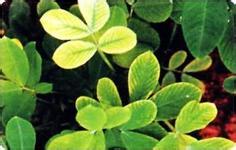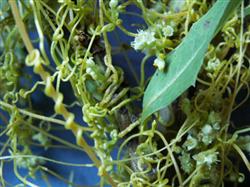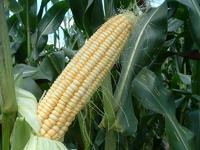Symptoms and Control of Peanut net spot

Peanut net spot, also known as brown spot and moire spot, often occurs mixed with leaf spot, which can cause early peanut leaf shedding and seriously affect peanut yield. The symptoms show that reticular spot disease often occurs at the flowering stage, and the peak period is from podding stage to mature stage, which mainly harms the leaves. Round or irregular black-brown spots are produced along the main vein at the beginning, and there is a green halo circle around the disease spots. After that, irregular brown spots with reticulate edges appear on the front of the leaves, and millet brown spots can be seen in the diseased part. When it is overcast and rainy, the disease spot on the leaf surface is large, nearly round, dark brown, the disease spot on the back of the leaf is not obvious, light brown, the serious disease spot is fused; under dry conditions, the disease spot is easy to rupture and perforate. Once the leaves are infected, they fall off easily. The regularity of the disease is beneficial to the occurrence and prevalence of the disease in continuous rainy days. The land with high humidity in the field is prone to disease, and the disease is serious in continuous cropping land. Control methods to strengthen field management: increase the application of rotten organic fertilizer and phosphorus and potassium fertilizer, reasonable watering, timely ploughing, improve plant disease resistance, and remove the disease and residue in time after harvest. Chemical control: at the initial stage of the disease, spray control with 500 times of 70% mancozeb wettable powder, or 700 times of 75% chlorothalonil wettable powder, or 64% poison alum 500 times of wettable powder, once every 7 to 10 days, 2 times for 3 times.
- Prev

Control of three main diseases of soybean
What does soybean dodder look like? What if soybean dodder happens? Dodder is also known as yellow rattan and tangled rice seedlings. It's a malignant weed. It harms a variety of crops and can cause the loss of soybean production, which is common in all parts of the country. (1) Morphology: the stem of soybean cocoon silk is yellow, orange or yellowish green, smooth and glabrous.
- Next

Cultivation techniques of High Oil Corn
The application effect of phosphorus and potassium fertilizer varies greatly due to the available content of soil. The application of phosphorus and potassium is beneficial to the early development of strong seedlings, strong plants and large ears, increase the ratio of grains to leaves, increase the number of grains and grain weight, which is an important condition to improve population quality. However, after the application of phosphorus and potassium fertilizer, most of it was absorbed and fixed by the soil, and the absorption and utilization rate was low in the soil.
Related
- The first cup of black tea in spring, the flavor and history of tea gardens in Kenya, Africa
- The computer can not only choose potatoes, but also grow tea rice. AI will grow winter oolong tea champion.
- It is not only the inflated tea bitten by insects, but also engraved with the four seasons tea in Beipu.
- The Oriental Beauty Tea Festival in Zhuxian County takes the stage at the weekend to experience the plus-size feast of oil tea.
- & quot; Oriental Beauty Tea & Exploration of Emei in Hsinchu, the hometown of quot;
- The new variety of strawberry "Tainong 1" dessert is the first choice with mellow aroma. Crimson gorgeous
- History of Tea in Taiwan: from Wild Inner Mountain to Export Tea Garden
- Two types of Taiwan Oriental Beauty Black Tea won the British three-Star Award for Childhood Tea Xiang Zhang Jiaqi changed from pilot to champion tea maker.
- Banana species and varieties: the planting history of Taiwan Xianren banana and dwarf banana is long, is banana disease resistant?
- Coffee planting Technology: Qianjie Coffee from Seedling to harvesting

